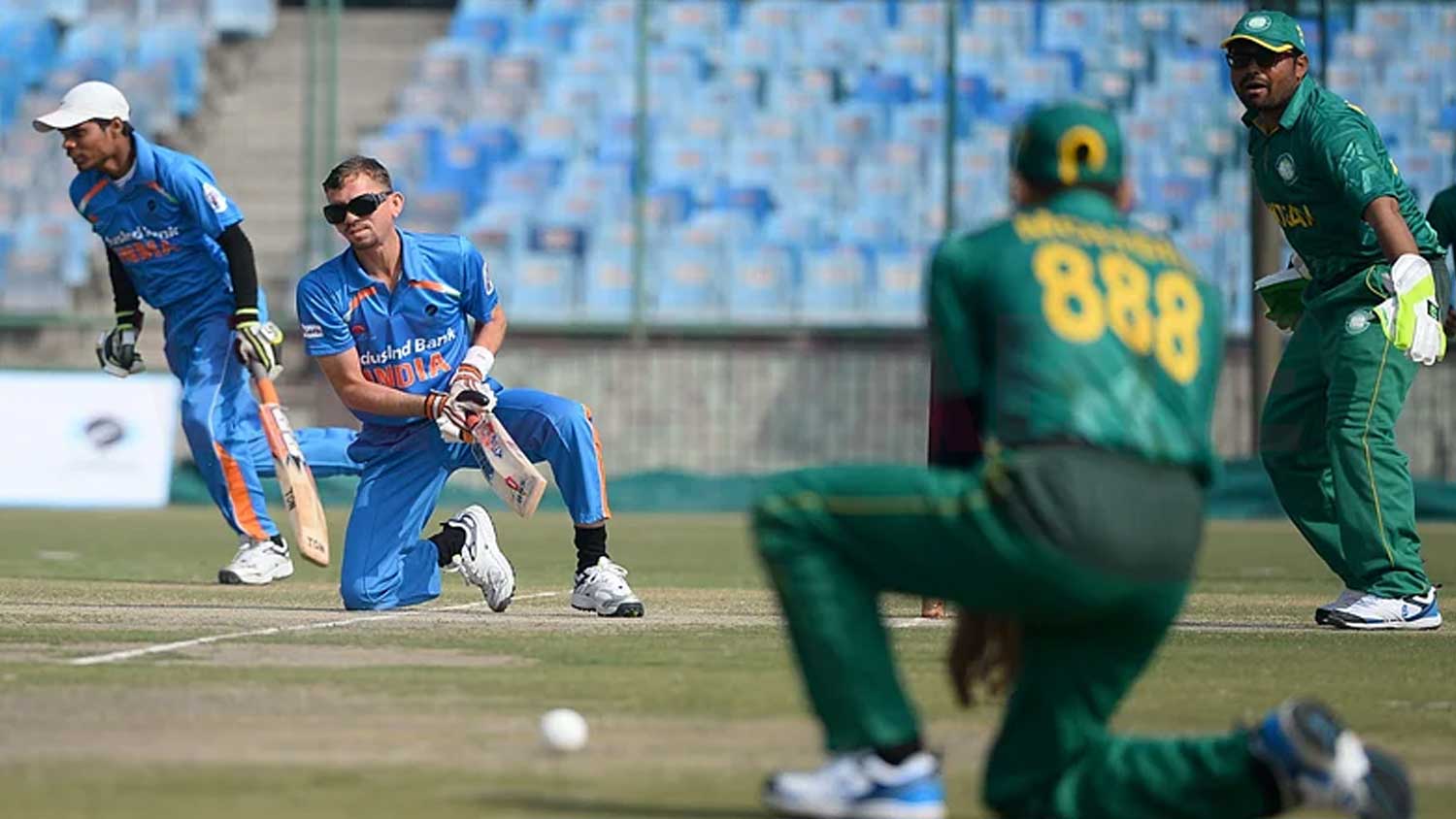Cricket, the gentleman’s game, has a rapport for strict rules and civility. It is a game that abides by the principle of being a gentleman on the crease and respecting teammates, the umpire as well as the opponents. In addition to the principles, the game has strict rules that need to be followed by all. We all are aware of the spirit and rules of the standard game of cricket. But, are you aware of the adapted rules for blind cricket?
Blind cricket is just the standard cricket adapted to the needs of the blind and partially sighted players. Let us have a look at the differences between standard cricket and blind cricket.
Cricket Field
Standard Cricket: There’s no fixed dimension for a standard cricket field. But, it usually varies from 450 feet (137m) and 500 feet (150 m) for men’s cricket and between 360 feet (110 m) and 420 feet (130 m) for women’s cricket.
Blind Cricket: There’s no standard size of the field for blind cricket but it is usually artificial and smaller than the standard cricket field.
Cricket Boundary
Standard Cricket: The boundary at both ends of the pitch (which is 22 yards long) the boundary is a minimum of 64 m. Measured from the center of the pitch, boundaries cannot exceed 82.29 m.
Blind Cricket: Boundaries are drawn 40 meters in a circle around the pitch (the standard 22 yards long and 3.05 m wide).
Stumps/ Wicket
Standard Cricket: Stumps, typically made of wood or plastic, are three vertical posts supporting two bails. The top of the stump needs to be 28 inches above the playing ground.
Blind Cricket: Stumps are slightly bigger and necessarily need to be painted in fluorescent color. There are three vertical posts but no bails.
Ball
Standard Cricket: A solid hard ball, not less than 22.4 cm in circumference not more than 22.9 cm, and not less than 5.5 ounces in weight, is used in cricket.
Blind Cricket: Balls in the blind cricket are significantly larger than regular cricket balls and are filled with ball bearings.
Team Composition
Standard Cricket: The team consists of 11 players. There are batsmen, bowlers, all-rounders, and wicket-keepers but no rule for the exact composition of these categories of players.
Blind Cricket: There are 11 players but the team composition is very strict –
- minimum of 4 completely blind players (B1 category),
- minimum of 3 partially blind players (B2 category) and
- maximum of 4 partially sighted players (B3 category).
Cricket Formats
Standard Cricket: There are 3 main formats of the game –
- Test cricket
- One day cricket
- T-20 cricket
Blind Cricket: There are 3 formats of blind cricket as well –
- 3 days game
- 40 overs game
- T-20 cricket
No Ball
Standard Cricket: There are around 15 types of no-balls in standard cricket. Basically, these are the deliveries that are considered to be illegitimate from the bowler’s end and cannot be played by the batters.
Blind Cricket: The concept of no ball is similar but the circumstances are different in blind cricket. One example of no-ball criteria in blind cricket is when the bowler throws the ball without shouting ‘play’ to make the batsman hit the ball.
Runner
Standard Cricket: A batsman can have a runner with permission in special circumstances like getting injured and not being able to run.
Blind Cricket: Totally blind player (B1 category) can always have a runner and partially blind players (B2 category) has the option to opt for a runner.
Underarm Delivery
Standard Cricket: An underarm delivery i.e. when the arm is below the shoulder level when throwing the ball is considered illegitimate and is considered a no-ball.
Blind Cricket: In blind cricket, all deliveries need to be underarm otherwise they will be considered illegitimate.
Pitching of Ball
Standard Cricket: A ball in standard cricket is valid if it is full-toss or if it pitches aka bounces once. If it bounces twice before reaching the batsman it is considered a dead ball.
Blind Cricket: The rules of blind cricket say that it is necessary for a ball to pitch twice before reaching the batsman if he is totally blind and it should bounce at least once if the batsman is partially blind. In any case, the ball must not be rolling.
Use the citation below to add this article to your bibliography
"Differences Between Blind Cricket and Standard Cricket." Wecapable.com. Web. July 27, 2024. <https://wecapable.com/blind-cricket-and-standard-cricket-differences/>
Wecapable.com, "Differences Between Blind Cricket and Standard Cricket." Accessed July 27, 2024. https://wecapable.com/blind-cricket-and-standard-cricket-differences/
"Differences Between Blind Cricket and Standard Cricket." (n.d.). Wecapable.com. Retrieved July 27, 2024 from https://wecapable.com/blind-cricket-and-standard-cricket-differences/


Leave a Reply